Thank you to Science Sparks for inviting me to guest post on their blog today. You can find me over at Rainy Day Mum where I share play ideas, activities, crafts, learning experiences and fun for babies, toddlers and preschoolers. As a former Marine Biologist and science teacher, I love the ideas that Science Sparks shares and really hope you have fun trying out our Pine Cone Weather Station idea.
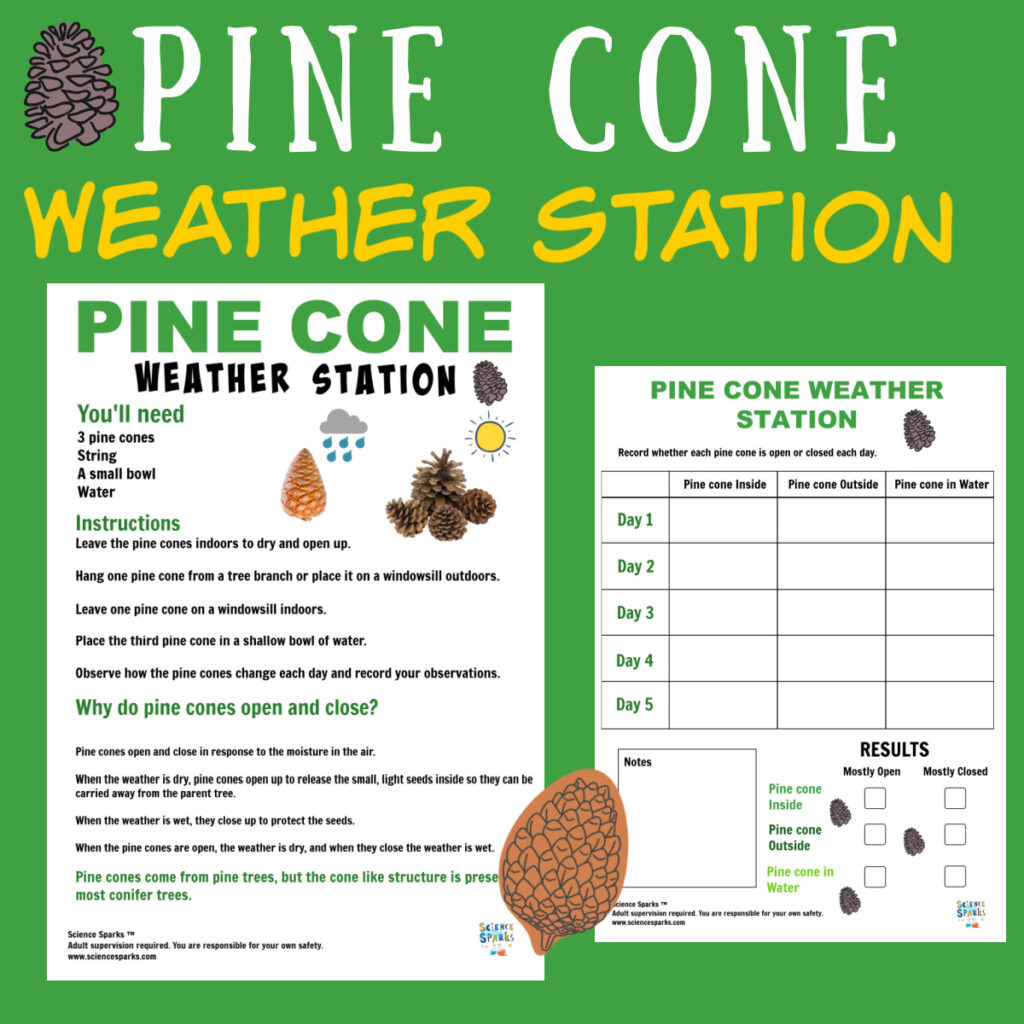
We come back from every walk with a collection of natural finds, and in that collection, there are always pine cones. So I decided to use them and set up a weather station to predict the weather.
How to make a pinecone weather station
Our pinecone weather station is set up on a windowsill outside in our garden, which we can see from another window inside the house. This allows us to record what's happening with our pine cones each day. I have found out it's a good idea to attach them to the window with some blu tack or modelling clay so that they don't fall over as the weather changes, but apart from that, the experiment is set up.
When the weather is dry, the pine cones open up, and when it's going to rain, they close down. It's a really fun way for children to start thinking about the future and what the weather will be like.
Pine Cone Weather Station Instructions
Leave the pine cones indoors to dry and open up.
Hang one pine cone from a tree branch or place it on a windowsill outdoors.
Leave one pine cone on a windowsill indoors.
Place the third pine cone in a shallow bowl of water.
Observe how the pine cones change each day and record your observations.
Why do pine cones open and close?
Pine cones open and close in response to the moisture in the air.
When the weather is dry, pine cones open up to release the small, light seeds inside so they can be carried away from the parent tree.
When the weather is wet, they close up to protect the seeds.
When the pine cones are open, the weather is dry, and when they close, the weather is wet.
Pine cones come from pine trees, but the cone-like structure is present on most conifer trees.
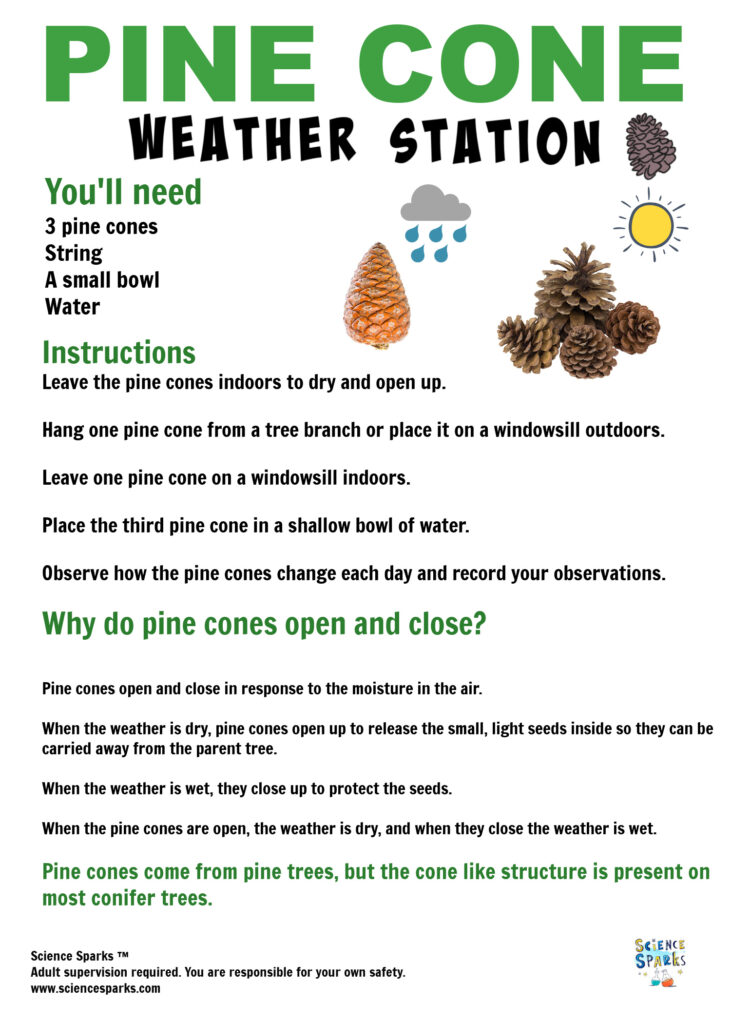
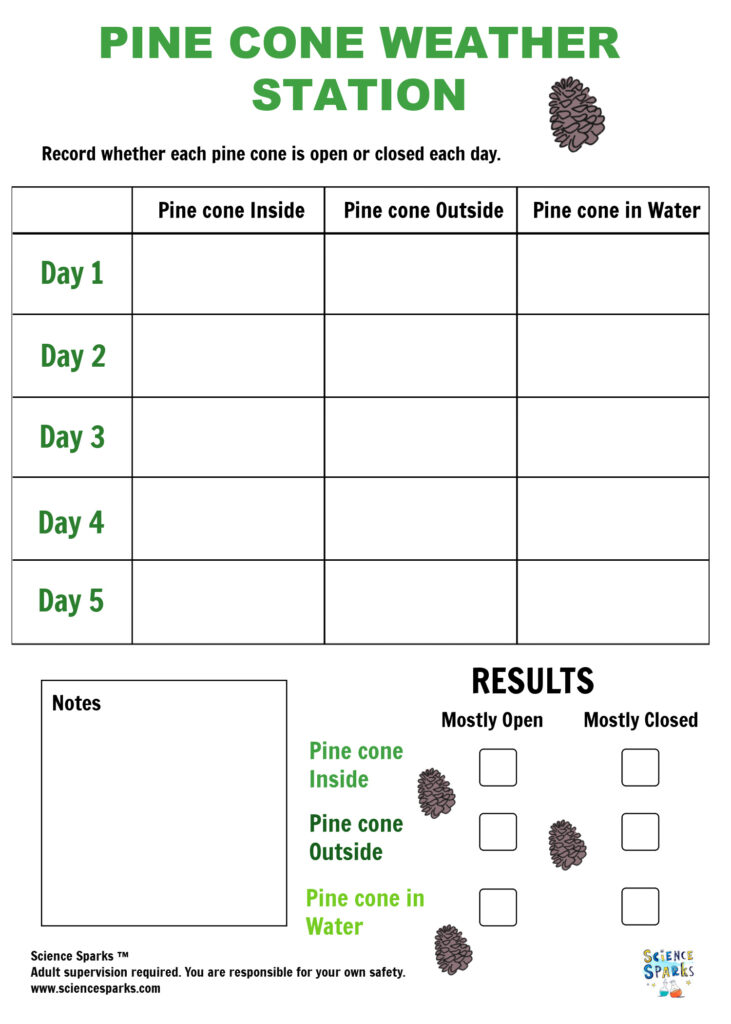
Pinecone Facts for Kids
Pine cones open and close depending on the humidity to help seed dispersal. Inside the pinecone, there are lots of feather-light seeds. When the weather is dry, the pine cone opens up, and any wind will catch the seeds and allow them to be dispersed in the air far away from the original tree.
When the humidity rises and rain is likely, the pine cone closes up to prevent the seeds from escaping. Because the seeds are so light, they will become waterlogged and travel only a short distance from the original source, which would be shaded and have to fight the "parent" tree for resources.
Cerys is a SAHM to two toddlers and blogs at Rainy Day Mum, where you can find lots of fun activities to do with your children, including messy play, imaginative play, baking and crafts.
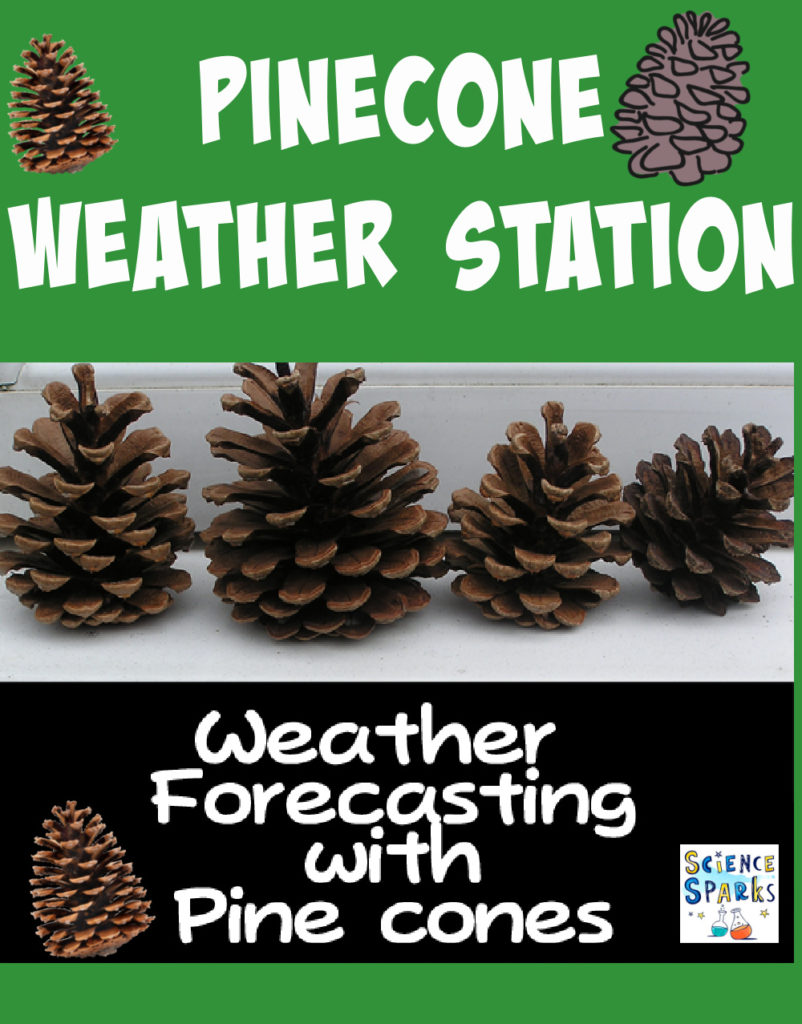
Last Updated on October 15, 2025 by Emma Vanstone

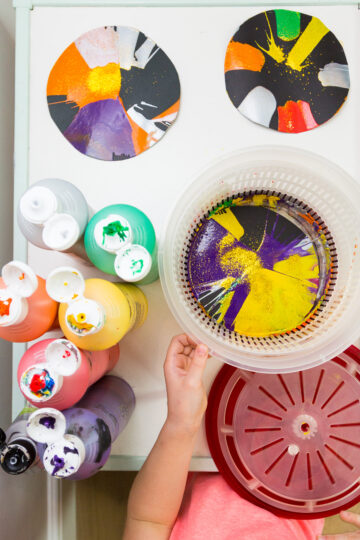
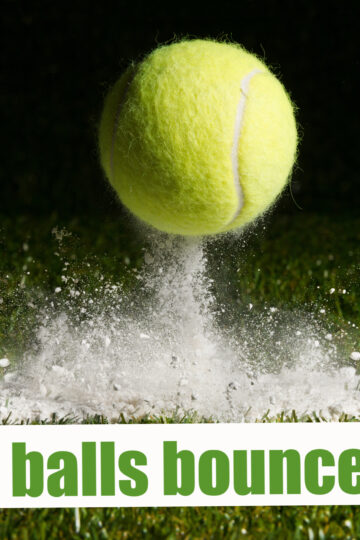
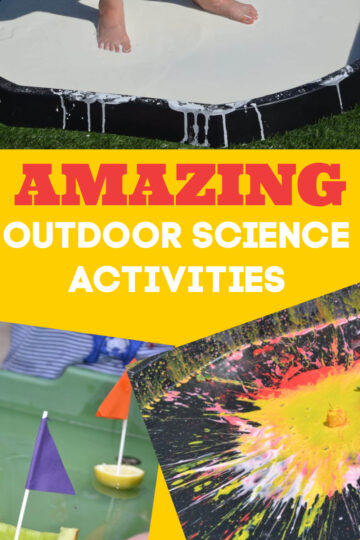
Cerys @ Rainy Day Mum says
Thank you so much for letting me post today 🙂
ScienceSparks says
Thanks for posting Cerys! I love it. x
Domestic Goddess says
What if you live in a very humid area? Will the experiment have the same effect/outcome? Very Cool By The Way 🙂
Carolyn says
Very cool- thanks!
ScienceSparks says
Glad you like it 🙂
Marie B says
How interesting! I have to share this lesson with not only my grandchildren who may already know it, but my great niece & nephew who are little! Thank you for sharing!
Constance L Larson says
I'm to be a "First Time" Grandma (Next March) and have been looking for "nature/natural" things to teach and experience with my Grandchildren. I know, I know Little One hasn't even been born but, the "Old Girl Scout" in me says: "Always be prepared." Thank you for the information and I would love other information from you or Friend me on my facebook.
Thank you again,
Constance
Roxane says
wow the little things in life are very meaningful and helpful to all of us....thanks for your idea and thanks be to God for all the little things in nature that alot of us know nothing about...
maggy, red ted art says
Love this! I have noticed out pine cones doing this and never really "register" to explain to the children what is happening! Great post.
Maggy
maggy, red ted art says
PS Thanks for sharing on Kids Get Crafty!
Maggy
j says
This is so cool! We will have to try it.
Sarah @ Stay At Home Educator says
How fun...plus I never knew! Can't wait to share this during a weather unit with my kiddies!
Giftsoc says
How cool is this! I didn't know this about pine cones. Will pin it and share - thanks!
abby says
amazing! how long will they do this for? will they last a few months?
ScienceSparks says
You know, i'm not sure!
Cerys @ Rainy Day Mum says
We have had ours in the garden for around 6 months now and they are still opening and closing regularly as the weather changes.
Bethany @ No Twiddle Twaddle says
That is such an interesting idea for a science activity. Thank you!
ScienceSparks says
Thanks. xx
Cerys @ Rainy Day Mum says
Yeah glad you like it Bethany
Carolyn says
Our pine cones aren't closing up before it rains. Do we need to take pine cones right from pine trees rather than use ones collected from the ground? Thanks for any tips!
Cerys @ Rainy Day Mum says
Hi Carolyn, ours weren't fresh from the tree and had been inside for a while before I put them out. A thought about why they may not be opening/closing is if they have been exposed to a high temperature then they will remain open. One of the ways to get them to stay open for displays is to bake them for 30 mins on a low temperature so this could have happened. It's also very much species dependent and I've only had success with the type of pine cones above the ones that are giant or elongated and thin don't work as well.
Carolyn says
Thank you for the response. We'll try again with another species. Or perhaps the drought and high temps all summer affected this year's pine cones. Good projects to investigage!
Cassie @ 3Dinosaurs.com says
I have a trunk full of pine cones! I have to try this out with my girls!
yamile says
I really like this idea. I have just picked up pine cones on Spring Break. I had a few ideas in using them. Out of curiosity I searched yours and LOVE IT. I'm a teacher and look forward to having my students investigate and do the entire scientific research on this.
Emma says
This is so cool! We also learning that when you put an open pine cone in water in closes up, probably for the same reason it closes up in the rain: to protect the seeds inside.
Theres Just One Mommy says
Very cool! We will be trying this in the near future!
Debby Shapiro says
Totally amazing. Many thanks!!
Betty Goodwin says
So, it depends on the species? All right...I'll have to find a bunch of different pine cones with my niece and try them all. It will be a nice experiment.